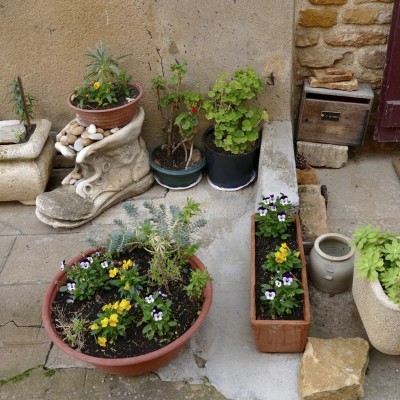






If you love to garden but find yourself low on space or you’re simply one of those people that travel often for extended periods, then you might benefit from having a portable garden. Let’s learn more about them.
Portable gardens are really nothing more than small container plantings that are relatively easy to relocate. They are perfect for people who are renting, in transition, have limited funds or restricted growing space.
The sky is the limit when it comes to the types of portable gardens you can have. Just put on your creative thinking cap, find a container of any sort, fill it with soil and install your favorite plants.
More common portable gardens include flower filled wheelbarrows, a collection of vegetables grown in clay pots on the back patio, or an herb garden grown in between the slats of a horizontally positioned, recycled wood pallet. You can also attach brightly painted geranium filled tin cans to a fence, grow your winter greens in a hanging shoe organizer or create a pond garden with a tire and some plastic.
You don’t necessarily need a backyard, a balcony, or a patio for gardens on the go. You can brighten up your apartment by tucking micro-gardens into empty spaces. Transform old teacups, toolboxes and baby Webers into vignettes of colorful annuals, saucy succulents, or edible greens.
A portable garden doesn’t always mean you can pick it up and haul it to your next abode. In dense urban centers with limited growing space, people are pushing the envelope of portable garden ideas by transforming old trailer homes into ornamental gardens and installing glass-encased greenhouses in the back of their long-bed pickup trucks. Soil filled cloth shopping bags can be snuggled into an abandoned shopping cart and planted with heirloom tomatoes.
Growing a small portable garden in a container is different from gardening in the ground. A container has limited soil and root space. It can easily become waterlogged or too dry. Use a moisture meter to monitor the soil.
Add vermiculite and compost to your potting mix help with both drainage and water retention. If you are using a container that doesn’t have any drainage holes, drill or cut a few small holes in the bottom.
Fertilize regularly with slow release organic fertilizers. Make sure your plants get enough light. Full sun plants require at least 6 hours of direct sun per day. If you don’t have that much sun, choose plants suited for shade or partly-shady conditions.
Select plants that will be the right size for your container. If they are too large, they may become leggy or overwhelm all the other plants in your container.
Container options are endless when growing a small portable garden. Save money and search through your closets and drawers of unwanted items. Reuse them! Attend yard sales and browse thrift stores for unusual containers. Create a unique and portable growing environment for all your favorite plants. Have fun.
Copyright © www.100flowers.win Botanic Garden All Rights Reserved